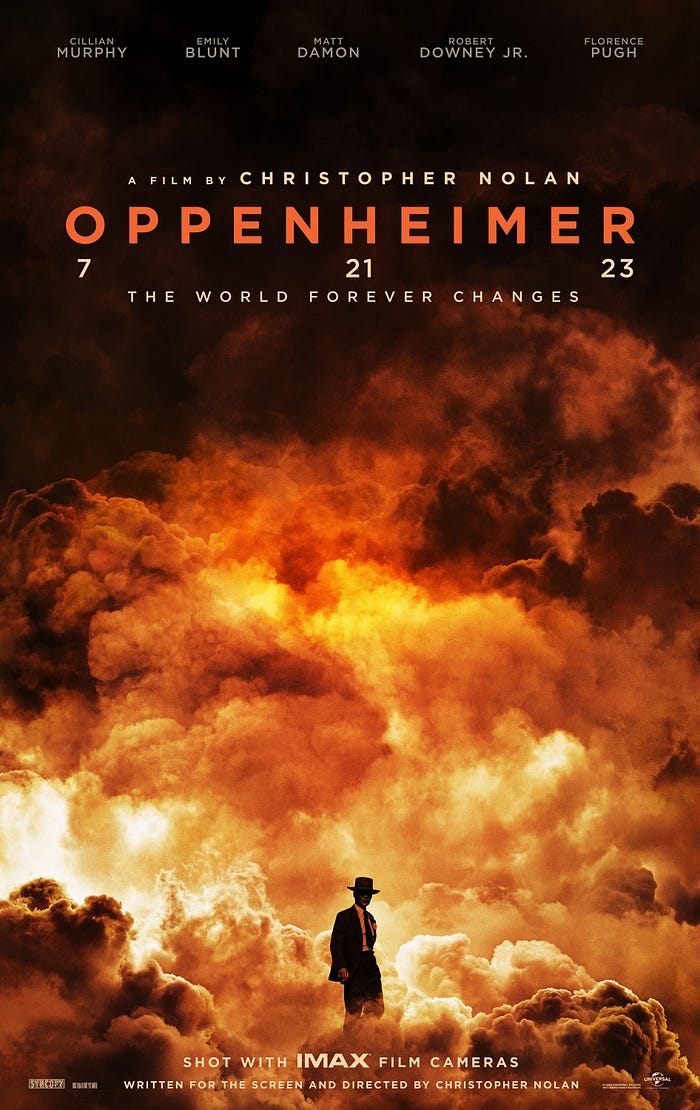The Legacy of Oppenheimer: Exploring Atomic History and Its Impact
Written on
Chapter 1: The Lasting Impact of Oppenheimer's Film
The film by Christopher Nolan, Oppenheimer, has captivated audiences, leaving many pondering not just the cinematic portrayal but also the actual life of physicist J. Robert Oppenheimer, who was instrumental in the development of the atomic bomb. Perhaps you’re curious about the real individuals who were part of Oppenheimer’s journey during World War II, or the broader themes that defined the 1930s and 40s.
Such inquiries create a compelling need for quality sources that can answer lingering questions, particularly after discussions with friends who share a similar enthusiasm. Thankfully, a wealth of material exists that not only satisfies this curiosity but often leads us in unexpected directions.
One primary source is the Pulitzer Prize-winning biography, American Prometheus: The Triumph and Tragedy of J. Robert Oppenheimer by Kai Bird and Martin J. Sherwin. The renewed interest in this 700-page tome has propelled it back onto bestseller lists, nearly two decades after its initial release.
In addition to this biography, numerous other texts on Oppenheimer and atomic history are readily available for purchase or through libraries. Additionally, interviews featuring Oppenheimer have resurfaced on YouTube, showcasing his later years as a thoughtful advocate for arms control.
This video, titled "OPPENHEIMER Explained: The Biggest Questions Answered," explores the most pressing questions surrounding the film and its historical context.
Section 1.1: Understanding the Atomic Bombings
Many viewers noted that Oppenheimer did not delve deeply into the bombings of Hiroshima and Nagasaki, which disappointed some. However, there are plentiful resources available for those wanting to learn more about the bombings on August 6 and 9, 1945. For instance, I recently heard a rebroadcast of Radiolab's 2012 episode "Double Blasted," which recounts the story of a Japanese man who survived the Hiroshima bombing and later sought refuge in Nagasaki, only to experience the second attack.
Additionally, John Hersey's timeless nonfiction work, Hiroshima, offers a profound look at the experiences of six individuals in the city. This book, a staple in high school curricula, has remained in print since its release in 1946.

Section 1.2: Museums and Resources
Both Hiroshima and Nagasaki maintain museums that provide online resources detailing the destruction and recovery of their cities. The Hiroshima Peace Memorial Museum, visited by President Obama in 2016, aims to promote peace and nuclear disarmament.
In the United States, various museums and agencies offer curated photographs, artifacts, and documents, such as the National Museum of Nuclear Science & History in Albuquerque and the Atomic Museum in Las Vegas. These platforms provide valuable insights into the history and aftermath of the atomic age.
Chapter 2: Uncovering Untold Stories
The second video, "Why So Many People Didn't 'Get' Oppenheimer," examines the complexities of understanding the film and its historical implications.
Contemporary journalism has also begun to highlight individuals affected by the bomb's legacy, such as those involved in uranium sourcing during the Manhattan Project. For example, Wired recently published a piece detailing the experiences of a writer whose father grew up in the Congo, a significant source of uranium for the Hiroshima bomb. The article sheds light on the harsh conditions faced by miners, emphasizing the lack of responsible sourcing standards at the time.
Moreover, various media outlets have reported on the environmental health risks attributed to the fallout from the Manhattan Project, particularly for communities like the Tularosa Basin Downwinders Consortium in New Mexico.
As Oppenheimer illustrates, the Trinity test was a moment of high tension, not just for the scientists involved but also for the nearby communities. Many local residents, primarily Hispanic and Indigenous farmers, were unaware of the potential dangers from the test and were not evacuated, leading to long-term health consequences.
Women in the Manhattan Project, often overshadowed in narratives, played significant roles, as evidenced by Lilli Hornig’s contributions, despite her being the only woman portrayed in the film. A podcast series titled "Lost Women of the Manhattan Project" aims to highlight the vital roles of women like Hornig in this pivotal era.
Conclusion: Reflecting on Moral Injury
The release of Oppenheimer invites us to consider deeper themes, such as "moral injury," which refers to the psychological damage inflicted on individuals who feel they've transgressed their moral beliefs. This concept resonates with Oppenheimer's own struggles, particularly his admission to President Truman that he felt he had "blood on my hands."
While Oppenheimer did receive posthumous recognition, like the Enrico Fermi Award in 1963, it raises questions about whether such honors can truly heal the wounds of conscience. My exploration of this topic has been sobering yet necessary, highlighting the multifaceted impact of the Manhattan Project on its participants and society.
In conclusion, Frank Oppenheimer's journey back into science and his establishment of the Exploratorium in San Francisco serves as a testament to resilience and the joy of scientific exploration.
Peace out, friends.